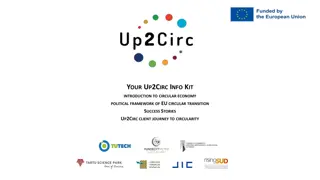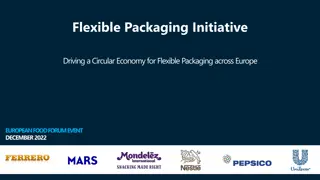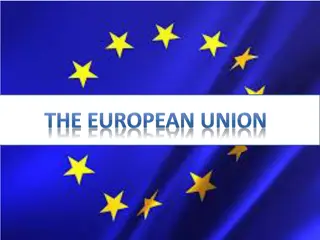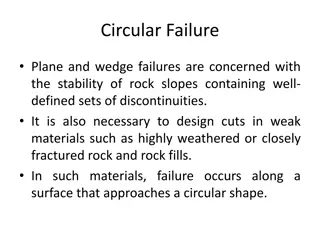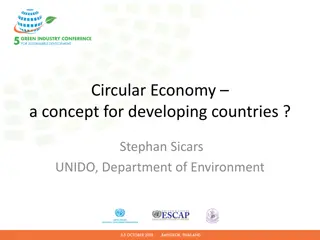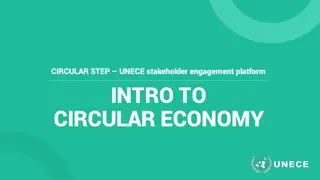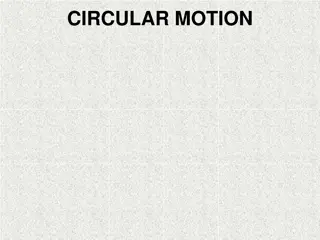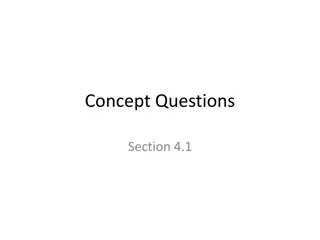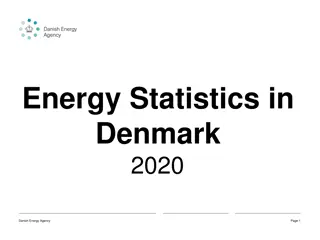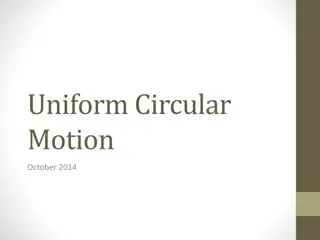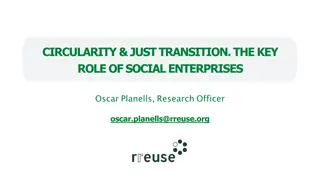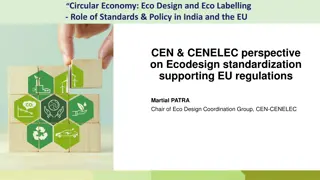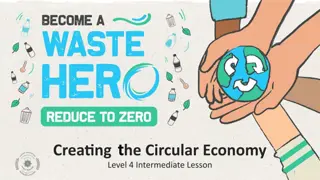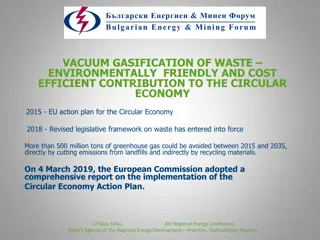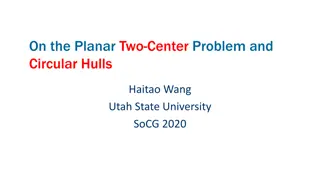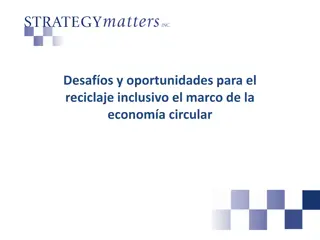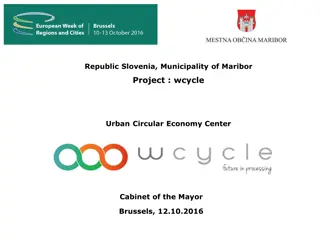Sustainable Circular Economy Projects in Denmark
Explore key ambitions and projects aiming to reduce CO2 emissions, promote circularity, and address challenges in the plastics and textiles industries in Denmark. From incorporating biocomposites to designing for disassembly, these initiatives pave the way for a regenerative circular society by 2050.
Download Presentation

Please find below an Image/Link to download the presentation.
The content on the website is provided AS IS for your information and personal use only. It may not be sold, licensed, or shared on other websites without obtaining consent from the author.If you encounter any issues during the download, it is possible that the publisher has removed the file from their server.
You are allowed to download the files provided on this website for personal or commercial use, subject to the condition that they are used lawfully. All files are the property of their respective owners.
The content on the website is provided AS IS for your information and personal use only. It may not be sold, licensed, or shared on other websites without obtaining consent from the author.
E N D
Presentation Transcript
TraCE Ambitions 2027 2050 2030 CO2eq. CO2eq. CO2eq. 42% 18% 97% In DK 0.9 Mt CO2 Global* 1.7 Mt CO2 In DK 0.6 Mt CO2 Global* 0.9 Mt CO2 + 4 500 + 12 600 + 1 000 Key ambitions for the partnership 2030 and 2050. *associated with consumption in DK
North Star Vision 2050 We have a REGENERATIVE circular society where resources are regrown from sustainable resources at zero or low impact
Pool 1 and 2 projects The IM4 Partnership has prioritized 14 projects for pool 1, and 5 projects for pool 2 all addressing key challenges of the circular economy of plastics and textiles.
Projects - Plastics ABR Pool Project Name Short description Project Lead P1 Pool 1 Biocomposites to substitute plastic Agro-industrial side-streams will be exploited for cellulose nanofibers (CNF) that will form the basis for composite manufacture. Drop-in technology will be demonstrated with injection mouldingas proof of concept, and applicability for food packaging will be demonstrated. Main challenges comprise removing water from CNF and integrating it with the matrix components amylose and bioresin so that optimal material properties plus good processability are attained University of Copenhagen, Peter Ulvskov P2 Pool 1 Reverse Material & Product Requirement Planning The aim of the project is to adopt a reverse material resource planning approach to increase the inclusion, utilization, quality, and circularity of recycled plastic. Exploring the possibilities of introducing flexibility in recycled material demand and supply without compromising material value and recyclability is a key objective of the project. Force Technology, Susanne Reinholdt Damgaard P3 Pool 1 Design for Disassembly The design for disassembly project using 3D modelling design technology and advanced robotic technology simulation aims to 1) optimize existing products degree of recyclability and 2) to develop advanced robotic technology for reversed engineering as a valuable tool for automation processes in preparing manufacturing companies using plastic for material recovery and circularity. University of Southern Denmark, Lykke Margot Ricard P4 Pool 1 PETfection The vision of the PETfectionproject is to demonstrate viable, circular value chains and implementation pathways for recycling of household waste plastics, and that such implementation can substantially support the Danish recycling requirements and CO2 reduction targets. Aalborg University, Thomas Helmer Pedersen P5 Pool 1 Circularity of Industrial Thermoplastic for high quality recycling The vision of the project is to enable companies to use recycled plastics in their products to the highest possible value application preferably in own products. If this is not possible, the composition of the companies will enable flow of material form one company using e.g. medical grade plastic to another company using e.g. cosmetic grade plastic. Thus, demonstrating ecosystems for plastic recycling at the highest possible level. Danish Technological Institute, Line Rold Tousgaard The diaper consumption accounts for approximately 100,000 tons of CO2-equivalent emissions in production and disposal. Despite the existence of technical solutions, such as hybrid diapers (which include a reusable part and disposable inserts), their usage remains insignificant in both public/private care institutions and households P6 Pool 2 Diaper system University of Southern Denmark, Ciprian Cimpan
Projects - Common ABR Pool Project Name Short description Project Lead C1 Pool 1 Sorting plastic and textiles using AI driven sensing solutions The goal of this project is to design a system that is capable of efficient sorting of plastic and textiles with different degrees of contamination. The system will hence allow plastic and textiles on the same sorting line. We thereby impose fewer constraints on the required source separation beforehand. University of Southern Denmark, Henrik Gordon Petersen C2 Pool 1 Circularity of plastics and textiles in the healthcare sector (CircleHealth) Initial steps for reducing use of virgin plastics and textiles resources and promoting circularity have been taken at front runner hospitals, but no organized or systematic efforts have been made until now. Circular public procurement is very immature and 6% of DenmarksGHG emissions currently derive from the healthcare sector. The project aims to map and analyze plastic and textile flows within the healthcare value chain, with the objective of proposing initiatives across the value chains for minimizing the CO2 emissions from the flow of materials. Roskilde University, Kristian Syberg C3 Pool 1 Mattresses Reuse and Recycle Systems, a pilot to scale (M-RRS) The project develops new approaches for reuse and recycling of mattresses, according to the quality and recyclability of the mattresses and based on intensive stakeholder insights. The project provides essential elements enabling implementation of the reuse/recycling value-chain involving criteria for the collection system and reuse/recycling options, and quantification of environmental emissions and impacts. Technical University of Denmark, Thomas Fruergaard Astrup C4 Pool 1 Regulation for Promotion of CE It is the ambition of the project to contribute substantially to the political efforts of establishing regulation that promotes a circular textile economy. The findings of the project will fuel into a broader, scientific-based underpinning of actual LCA measurements on textile fibers that is able to support regulation on actual full-circle fiber performance and climate impact from cradle-to-cradle. Most importantly, the project will also directly facilitate the developments of circular textile value chains with considerable effects on maintaining and expanding Danish employment along the textiles value chain. The Royal Danish Academy, Else Skjold C5 Pool 2 Change4Circularity Change4Circularity (C4C) will collect and utilize the hitherto most comprehensive data set on plastic pollution, household sorting and management of plastics and textiles waste in Denmark. This is done in the large-scale citizen science project Mass experiment, which will engage 30.000-50.000 school students throughout the Danish realm. University of Southern Denmark, Lykke Margot Ricard Aalborg University, Mette Alberg Mosgaard C6 Pool 2 Design2Use Design for multiple use of textile products in public and private partnerships (Design2.Use) aims to develop and test new circular textile solutions in the furniture industry focused on design for multiple use.
Projects - Textiles ABR Pool Project Name Short description Project Lead T1 Pool 1 MCC FASHION: Mass Customization for Circularity An alternative fashion paradigm towards a green transition. Better informed technology for interlinking fashion industry and users size, fit and style preferences. VIA University College, Anne Louise Bang The purpose of CircularTex is to develop and test new textile solutions and value propositions for markets that will lead to a slowing of textile resource loops. By working with both supply (producers) and demand (private/public consumers), the project will create 4 pilots that are aligned with local market needs, developed through a user-led design process, and based on new CE design strategies T2 Pool 1 Circular Textile Pilots Aalborg University, Louise M ller Haase T3 Pool 1 Blockchain, IoT and Resale The project will aim for a holistic view of blockchain, IoT and Resale. Screen the current solutions and map which are used for example NFT selling, provenance, resell, smart contracts or CO2 measurement. Copenhagen Business School, Thomas Jensen T4 Pool 1 SEWBOT Local sewing of cloth, which can be cost effective with sew-robots, can eliminate large quantities of excess production due to fast response to marked demands with a short supply chain. In Denmark 677 tons of unused cloth is burned due to excess production. Reshoring textile manufacturing back to Denmark through automation is estimated to create 1000+ jobs and bring back know-how and technological solutions. Morten Kristiansen, Aalborg University The purpose of One Textile Direction is to establish a new state-of-the-art for circular design, procurement, use and reuse of textile to the private household, public and private professional sector. The project will take responsibility for development and maturing technology for the first Danish automated sorting of textiles for recycling and textile-to-textile recycling of end-of-life household textiles and workwear. T5 Pool 1 One Textile Direction Danish Technological Institute, Gitte Julie Holbek The DECOUPLE project has a vision of decoupling resource consumption and economic growth in the textile industry and thereby paving the way for transitioning the textile industry into a circular economy. T6 Pool 2 Decouple Danish Technological Institute, Julie Stokkebro Schm kel Aalborg University, Louise M ller Haase Design for Longevity (DFL) is one of the strategies emphasisedto counteract and reduce the current overproduction and overconsumption of clothes and thus contribute to CO2 reduction. However, there is a lack of data to measure the actual effect of employing a DFL strategy, which leaves companies to base their longevity strategies on assumptions and hypotheses T7 Pool 2 Prolong





